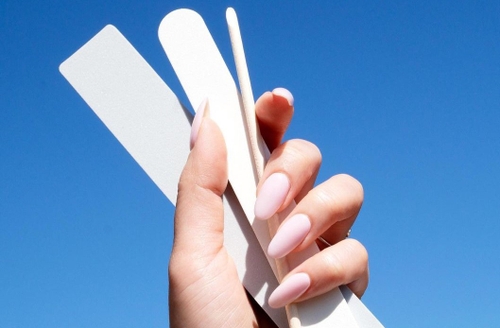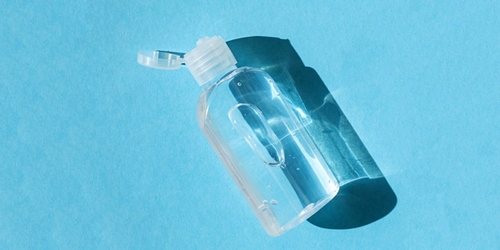The term "dip flu" is buzzing around the dip mani community, and it's pretty alarming!
We did some digging, and we came across 3 groups of people talking about it.
- Those who were like, "Dip flu? What's that?"
- Those who experienced flu-like symptoms, which they suspect is because of their dip nails.
- And those who are on the fence about even trying dip nails because of the whole dip flu thing.
Did you find yourself thinking "Ooh, that's me" to any of these categories?
Keep reading, we got something to either satisfy your curiosity or calm your anxiety.
Today we’re tackling what the term "dip flu" means, how to know if you need to be concerned about it, and what steps you can take to prevent it.
Fair warning: This content should NOT be taken as medical advice. Seek medical counsel for any symptoms.
Get free tutorials, special deals every week!
Sign up for fresh nail inspo & exclusive discounts delivered right to your inbox.
By subscribing, you acknowledge our Privacy Policy.
What is the dip flu?
First of all, you'll find that "dip flu" has become a catch-all term for any kind of allergic reaction some dip manicure users have.
They were either sensitive to the dipping liquids, to the dip powder, or both. But most of the reports we've read attribute the allergic sensitivities to the liquids, such as the base and the sealer.
It has to be noted, however, that not everybody reacts the same way to any part of the dip nail system.
Case in point:
Some people have been doing dip nails for years with no reactions.
Some people get the dip flu every time they do dip mani.
Some people had the dip flu once and never again.
Suffice it to say, whether you’re dipping at home or at a salon, there may or may not be side effects at all. Since the dip flu is not an official medical condition, descriptions of the symptoms may also vary.
Let's chat about this next.
What are the symptoms?
Before we go any further—if you are currently experiencing any of these symptoms, please contact your physician immediately!
Cool? Cool.
So, we've scoured the internet for actual experiences of dip powder users, and here are
the flu-like or cold-like symptoms they've shared.
- Headache and/or nausea
- Nasal congestion, runny nose, sneezing
- Cough
- Itchy throat and watery eyes
- Tightness in chest
- Infected skin (especially surrounding the nail bed)
- Generally irritated skin
- Respiratory irritation
These symptoms can be likened to those of the seasonal allergies, too. That's why it's no surprise that some thought it's just their common allergies kicking in at a weird time. Some figured it's the dip flu since it coincided with whenever they do dip manicures.
Even their experiences with the symptoms differ from each other.
They had the dip flu either on the day they got their dip powder nails or the next day—even days after. It also either lasted for a few hours or a day or longer.
It's hard to lay down a definitive description of the dip flu symptoms.
Should you worry about it?
Despite what a lot of our grandmothers told us, beauty should NOT cause pain.

Getting a dip powder mani should be a fun, relaxing process that doesn't create painful allergic reactions.
So what's creating these dip flu symptoms in some users? Causes likely include:
- Poor hygiene
- Allergies to the dip liquid formulas
- Allergies to the dip powder
- Pre-existing skin conditions
- Pre-existing respiratory conditions like asthma or bronchitis
But here's the thing:
Even some of those with pre-existing respiratory conditions confirmed that their dip powder nails didn't trigger their ailments at all.
Gettin' interesting, ain't it?
To add to that, some at-home dip powder nail kit users report that "This never happened to me getting my nails done at the salon".
The assumption is that when you do your own dip nails, you're in closer proximity to the dipping products. So if you're prone to allergic reactions or irritations, it's best to keep your hand at a safe distance from your face while working on your dip mani. You know, just in case. (Even if the less-than-ideal effects of an acrylic dip system, if any, is on a person by person basis.)
What can we all do to prevent it?
If you find that you are highly allergic to the actual dip powder formulas, you can take steps to limit your exposure during your DIY dip manicure session.
- Many people find that using a high-quality construction mask during the process helps them breathe freely and avoid the irritation and headaches from inhaling the products’ scent.
- For any type of nail application, including dipping, be sure to apply products or do your nails in an open or well-ventilated room.
- Note that well-ventilated does not mean having a fan blowing on you—that can kick the dip powder into the air. Be sure the a/c or the breeze from outdoors isn’t too strong nor blowing dust around.
- Do your dip nails in an environment with a lot of light, so you know if you’re spilling product. Being diligent with how you’re applying the products helps minimize the amount of cleanup after doing your nails. You’ll save time and help prevent irritation.
- Use an old towel, cloth, or mat that can be easily washed on your work surface, so you can properly catch and dispose of dust particles.
- Consider using an air purifier or even a humidifier to prevent dry air or breathing in dust particles.
- After application, shake off all the dust outside on a non-windy day.
- Hop in the shower immediately once your dip nails are dried to rinse off any remaining residue.
If you have a pre-existing condition, that means you’re a bit more sensitive in general.
- You may find that an easier, more comfortable way to take care of your nails is with a 7-free polish. Olive & June’s vegan nail polish line is super easy to apply. It comes in a wide range of shades and doesn’t include potential irritants like dibutyl phthalate (DBP), ethyl tosylamide, toluene, formaldehyde, formaldehyde resin, camphor and xylene.
- Others find it effective to take an anti-allergy pill, nasal spray or nasal drops before doing a dip mani. But it's best to schedule a time to talk with your doctor about options for identifying underlying allergies. Figuring out exactly which ingredients cause issues can help you find the best manicure options that have you feeling and looking great.
If you've experienced an infection after a salon dip manicure, or you want to ensure you *DO NOT* get any infection from a salon mani, there are preemptive steps you can take.
- Ask how the salon used the dip powder. Using a separate container and pouring the powder over the nail is more hygienic than just dipping directly into the shared jar. Be sure they do not pour the excess powder back into the original jar.
- Bring your own dip powder with you. Your salon tech will be happy to oblige, and you won’t have to worry about contaminated powder.
- Make sure your salon uses freshly sterilized tools—this is important no matter what kind of mani you’re getting. Don’t feel embarrassed, or like you’re being high maintenance. Your health is worth it!

So... is the dip flu struggle real? Or is the dip flu a fluke? Probably a mere coincidence?
Honestly, it's hard to tell.
The portion of users that negatively responds to dip nails may be waaay smaller than those unaffected by the dip flu.
But this is not to say you should let your guard down.
We'd say just monitor yourself after doing your dip nails. See how your body responds.
And here at DipWell, we always want to help you get the best-looking, best-feeling dip mani possible. Check out our dip manicure tutorials here and our FAQ answers here.
For more tips on preventing infection and general nastiness, read Happy, Healthy Nails: How to Keep Your Manicures Sanitary & Safe.
At the end of the day, it's all about finding out what works well for you without sacrificing pretty nails. Happy dipping!
Get free tutorials, special deals every week!
Sign up for fresh nail inspo & exclusive discounts delivered right to your inbox!
By subscribing, you acknowledge our Privacy Policy.




